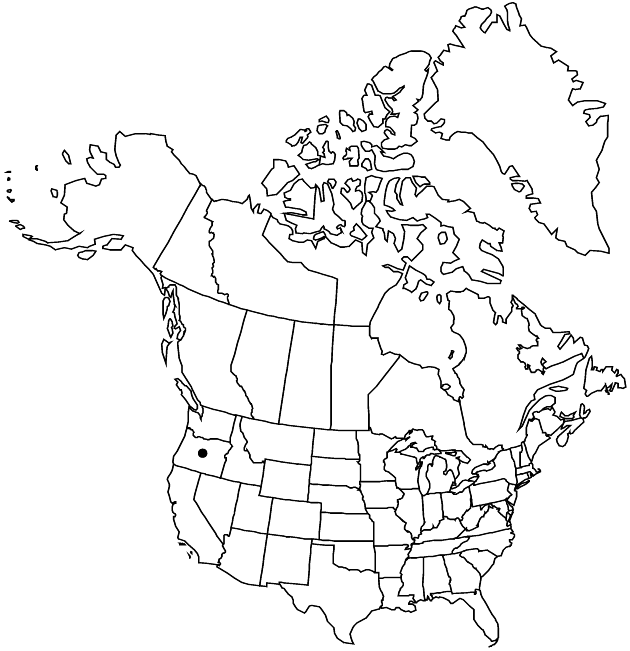Stephanomeria malheurensis
Madroño 25: 44, fig. 1. 1978.
Annuals, 10–60 cm. Stems single, branches ascending, glabrous. Leaves withered at flowering; basal blades oblanceolate to spatulate, 5–7 cm, margins entire to pinnately lobed (faces glabrous); cauline much reduced, bractlike. Heads borne singly along branches. Peduncles 5–10 mm (glabrous).Calyculi of appressed bractlets. Involucres 8–9.5 mm. Florets 5–6 (ligules usually pink, rarely white or orange-yellow). Cypselae tan to light brown, 3.3–3.8 mm, faces moderately tuberculate, grooved; pappi of 9–12(–15), light tan bristles (connate in groups of 2–4, bristles and/or bases persistent), plumose on distal 50–60%. 2n = 16.
Phenology: Flowering Jul–Aug.
Habitat: Soils derived from volcanic tuff, high desert. of conservation concern
Elevation: 1600 m
Distribution

Oreg.
Discussion
Of conservation concern.
Stephanomeria malheurensis has been examined in a series of studies (L. D. Gottlieb 1973b, 1977, 1978b, 1979, 1991; Gottlieb and J. P. Bennett 1983; S. Brauner and Gottlieb 1987, 1989; B. A. Bohm and Gottlieb 1989) because it is one of the very few examples of the recent, natural origin of a diploid, annual plant species. At the type locality, it grows with a population of S. exigua subsp. coronaria that is thought to be its progenitor.
Stephanomeria malheurensis is known from a single locality in Harney County, Oregon, growing in soil derived from volcanic tuff in the high desert of eastern Oregon. It is a federally listed rare and endangered species, and is in the Center for Plant Conservation’s National Collection of Endangered Plants.
Selected References
None.